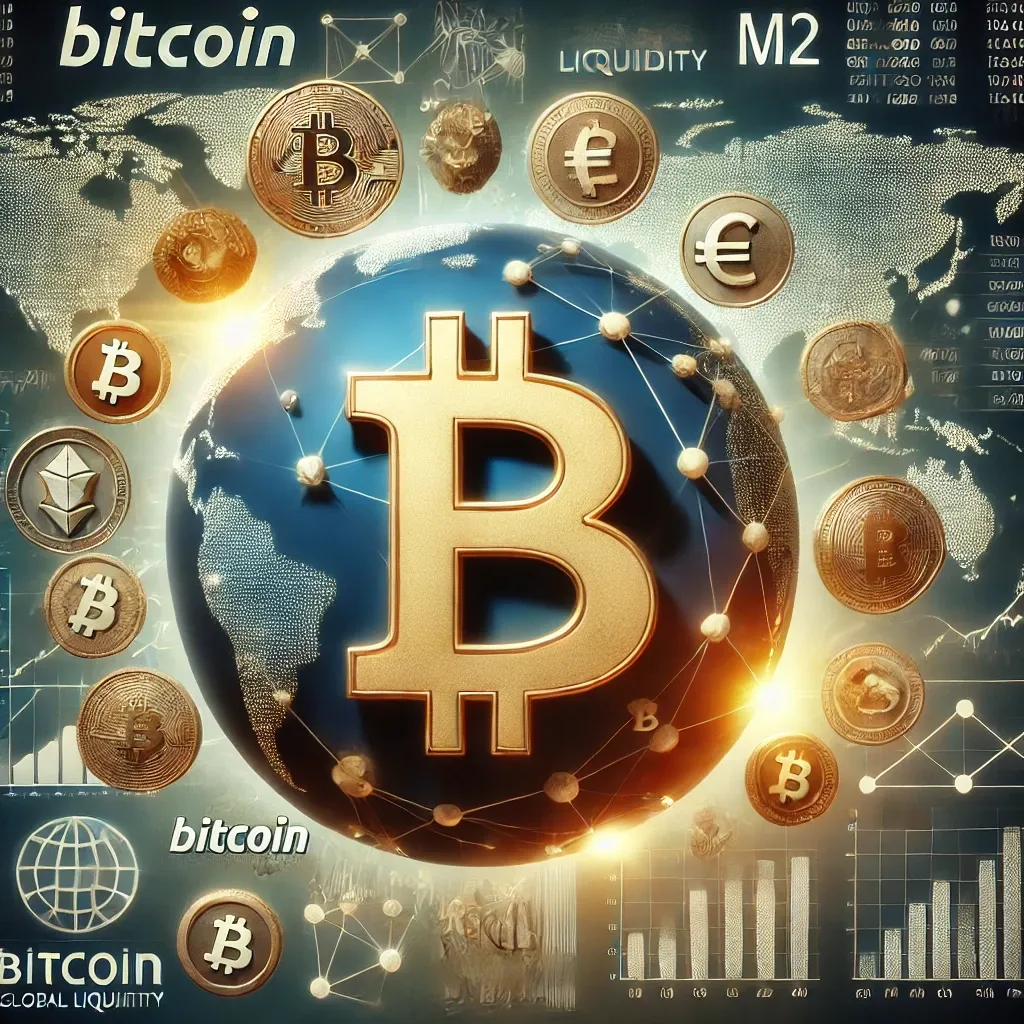What connects Bitcoin to global M2 money supply? How does this dynamic shape the world economy? Dive into these connections and uncover their implications!
Bitcoin vs Global M2
Bitcoin has emerged as a disruptive asset class, increasingly viewed as a digital alternative to traditional currencies and stores of value. But how does it stack up against the Global M2 money supply, a key metric of global liquidity that tracks the total money circulating in the economy, including cash and easily accessible bank deposits? The comparison reveals striking insights.
- Finite Supply vs Infinite Printing: Bitcoin’s capped supply of 21 million contrasts sharply with the virtually unlimited expansion of M2 through central bank policies.
- Hedge Against Inflation: As M2 expands, devaluing fiat currencies, Bitcoin’s fixed supply could position it as a store of value.
- Accessibility and Decentralization: Bitcoin operates without geographical restrictions, unlike fiat money tied to national economies.
These differences highlight why Bitcoin is attracting both retail and institutional investors seeking alternatives to fiat currency systems.
Why the Comparison Matters:
- Economic Resilience: How Bitcoin could weather financial crises tied to M2 expansion.
- Inflation Trends: Decoding the growing preference for Bitcoin as an inflation hedge.
- Digital Economy: Its role in a rapidly digitizing global market.
Bitcoin Global Liquidity M2
Understanding Bitcoin in the context of global liquidity offers fresh perspectives on its role in financial markets. Global liquidity (M2) influences asset prices and economic stability. By analyzing this, we uncover Bitcoin’s potential as a macroeconomic hedge.Bitcoin interacts with liquidity dynamics in fascinating ways:
- Correlation Trends: Historical data shows periods of correlation between Bitcoin prices and global M2 growth.
- Decoupling Opportunities: Bitcoin could act as a safe haven in scenarios where M2 expansion destabilizes traditional markets.
- Institutional Impact: The growing institutional interest in Bitcoin underscores its place in diversified portfolios.
Key Insights into Global Liquidity M2:
- Emerging Markets: Bitcoin adoption is higher in nations with unstable fiat currencies.
- Scarcity Premium: Bitcoin’s limited supply contrasts with central bank-driven liquidity injections.
- Market Behavior: Understanding liquidity cycles can aid in predicting Bitcoin price movements.
Bitcoin serves as a fascinating lens to observe how digital assets intersect with traditional monetary policies.
Bitcoin Price vs Global M2
The interplay between Bitcoin’s price and the global M2 money supply is a hot topic in financial circles. Observers often note Bitcoin price surges during periods of aggressive M2 expansion.Bitcoin’s price correlation with global M2 growth highlights these trends:
- Liquidity Fuels Demand: M2 growth often provides liquidity that could flow into alternative assets like Bitcoin.
- Volatility Considerations: Rapid changes in M2 policy can create significant price swings in Bitcoin markets.
- Market Psychology: Perceptions of inflationary risks tied to M2 spur speculative interest in Bitcoin.
Factors Affecting Bitcoin Prices in Relation to M2:
- Central Bank Policies: Quantitative easing or tightening directly impacts liquidity.
- Adoption Rates: More adoption amplifies Bitcoin’s reaction to global liquidity.
- Market Maturity: With increasing institutional involvement, Bitcoin may react more predictably to liquidity changes.
By monitoring M2 trends, investors can gain insights into potential price movements and market sentiment shifts for Bitcoin.
Conclusion
The relationship between Bitcoin and global M2 liquidity is reshaping financial discourse. As Bitcoin continues to challenge traditional monetary systems, understanding its interaction with M2 money supply offers valuable insights for investors and policymakers. As Warren Buffett famously said, “Price is what you pay. Value is what you get.” Bitcoin’s perceived value in an era of expanding global liquidity underlines its growing significance in modern finance.






